Every woman wants to be stylish. At the same time, she would not like to spend a lot of money on buying a designer dress. In this case, ladies begin to think about how to sew a dress with their own hands. Master classes for various models are abundant on the Internet, fabric is in the nearest store, so why not get down to business yourself!
Why sew dresses yourself?
Self-tailoring has a number of features that distinguish it from a thing bought in a store. First of all, many girls have a couple of options in their heads that would suit their figure perfectly, but they have not yet found such items on store shelves.
In this case, you can start making your own clothes.
Pros and cons of a dress sewn by yourself
It is not difficult to sew a dress with your own hands (master class, different models - further in the article), but you need to immediately determine whether this thing is worth the effort, money and time spent.

This type of activity has a number of advantages and disadvantages:
| Advantages | Flaws |
| Individuality of form, silhouette. The ability to take into account all the nuances of the figure and make a thing that will sit on its owner simply magnificently. | Different fabrics require different approaches. An inexperienced seamstress can fail to make a product if she chooses too capricious materials. |
| There is no need to wait until the master gets around to sewing the customer's item. The time it will take to receive the finished product depends only on the owner. | It is not worth excluding the fact that without skills, the dress will turn out far from what was originally intended. It may be necessary to make several attempts. |
| You can choose any color, thickness and texture of fabric for sewing. | It is not possible to sew a dress without experience with all styles. Experiments can lead to the fact that the thing simply "does not fit". |
| Comparatively lower cost than buying a dress in a store or going to a seamstress. | It is not always possible to immediately correct the flaws of the figure with a homemade dress. It is possible, through ignorance, to bring to the fore the negative aspects of the silhouette, and not to remove them. |
| Uniqueness of cut. |
Where to start?
A beginner in cutting and sewing needs to know exactly the algorithm of actions that must be followed.
Namely:
- Decide on the style, model and length of the future product. For beginners, it is preferable to choose a simple and uncomplicated dress shape. It is better to refuse unnecessary connecting seams and many decorative details. It is optimal to complement a simple dress with original bright accessories.
- Select the color, texture and structure of the fabric, from which the dress will be made. The fabric should be such that it matches the theme of the future events to which the product will be worn. And most importantly, it is imperative to select a material that will be easy to work with even for a sewing novice.
- Prepare all necessary auxiliary materials for sewing. You need to stock up on edges, adhesive linings, fasteners, zippers and buttons in advance. And, of course, you should never forget about needles, a tape measure, scissors, pins, chalk and hairpins.
- Make a pattern. It will be difficult for a beginner to sew a dress without a pattern. Therefore, when a seamstress takes her first steps, it is still necessary to stock up on several drawings of the future product.
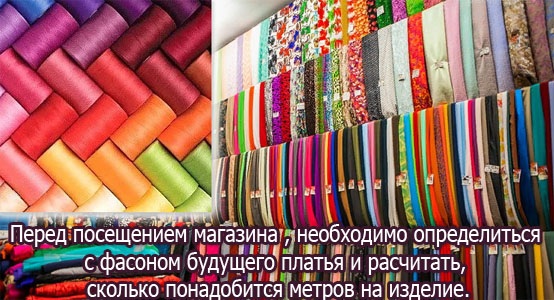
In order to select all the necessary tools and materials, it is best to visit a specialized sewing store. There, a consultant will select the fabric and materials that are required for each individual case. Patterns can be found in huge quantities on the Internet.
Next, they need to be transferred to large sheets of paper, taking into account the scale and individual dimensions of the owner of the future dress.
What to sew first and where to get patterns?
At first, it is recommended to choose a simple dress with a simple cut. It is not so difficult to sew, the pattern for it is easiest to find online and adjust to your own parameters. Speaking of patterns: they can be either ordered from a professional seamstress or developed by hand.
It is acceptable to take measurements from existing clothing and then transfer them to a previously printed template.
A visual video on how to cut out and sew a simple dress yourself:
For a simple straight-cut dress, it is possible to use a regular rectangular piece of fabric as a pattern, on one side of which it is necessary to cut out the bodice, the dimensions of which can be redrawn from your favorite T-shirt. Such a dress will turn out simple and elegant. It is acceptable to wear this wardrobe item to any event - both for an evening walk and when going out.
Experts advise choosing solid fabrics in muted, calm colours.
How to sew a dress yourself for beginner needlewomen
Sewing a dress with your own hands (master class, different models can also be found in thematic magazines) will not be difficult even for a beginner.
There are a number of recommendations and tips that will help a novice seamstress make her work easier:
- The main measurements that will need to be taken from the model will be the bust, waist and hips. This is half the chest, waist and hips respectively. To cope with this task, you need to measure the length of each parameter with a centimeter, and then divide the resulting data by two.
- It is essential to depict each new detail of the dress as a separate element. You should never draw the parts together in advance., since there is a risk of obtaining a poor-quality result - unnecessary folds, unevenness, seam divergence and the inability to sweep the overall structure.
- Before transferring the pattern onto the fabric, you need to additionally check that all parameters match. Particular attention should be paid to the armhole. and connecting lines of all parts of the dress. In case of discrepancy, you can cut off the excess or glue the missing pieces to the paper model.
- It is essential to mark the hip lines, waist and all darts on the pattern. These are the most important components of the future silhouette, and the final work depends on the quality of their execution.
- A beginner seamstress can make a pattern together with small allowances. This way, a beginner can avoid damaging the fabric as a result of a mistake.
- Silk, linen or cotton must be pre-ironed before cutting. from the wrong side. If you find any skewing or large folds, the material should be slightly moistened and then carefully ironed.
- It is also necessary to determine where the right side of the fabric is before starting the sewing process. In some cases, it will be difficult to answer this question right away. You need to focus on the edge of the material, because at factories all fabrics are rolled up with the right side inside the roll, on the edges of which the fastening needles are located.
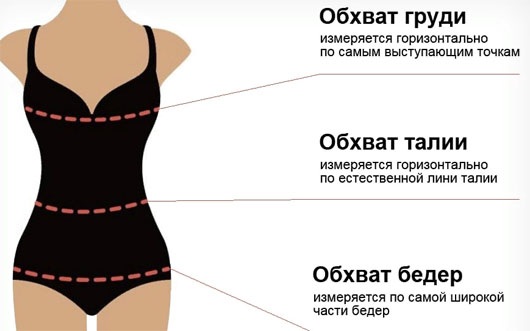
Based on this, we can conclude that the needle holes should be directed from the front side.
General sewing algorithm
Regardless of the type of product, it is necessary to familiarize yourself with the general algorithm of sewing before starting work.
It includes several basic stages of work, which together form a single process of cutting and sewing:
- Taking measurements. It is very important to take all measurements from the model correctly. The main dimensions are considered to be half of the hip, waist, chest, distance from the elbow to the shoulder, armhole size and the length of the product along the spine line. It is best to measure these points two or three times and write down the most accurate result. Sometimes it will not be superfluous to leave 2 cm allowance on the armhole and spine seam in order to use them as a reserve in the future, in case of incorrect measurements.
- Making pattern pieces. At this stage, it is necessary to transfer all the measurements taken to the dress model, the model of which was chosen for sewing. It is best to move from large parts to smaller ones, leaving a few centimeters of reserve. It is necessary to remember that it will always be possible to cut off the excess, it is almost impossible to sew the missing centimeters without damaging the product.
- Preparing for cutting. After the paper template has been drawn, it is necessary to start transferring the components onto the fabric and composing the future dress. It is better to depict each detail separately. After checking the dimensions, you can transfer everything from paper to cardboard or oilcloth, depending on which material is preferable to use. Here you will need to mark the most important parts of the dress with a bright line. These are: darts, chest line, waist, hips, center of the object and shared. Before cutting, the distance between important points is checked with a centimeter. If something does not match, then the pattern needs to be redone. The neck and collar should be the same, as well as the armhole with the sleeve cap.
- Layout of the main elements of the dress. Beginning of cutting. Before cutting, a detailed inspection of the fabric for defects is a mandatory step. If imperfections are found, they should be outlined with chalk in order to correctly arrange the details and avoid poor-quality areas of the material. If a fleecy or patterned fabric was chosen, all the details are arranged strictly in one direction. The direction of the pile is from the bottom to the top. The fabric should be placed on the table with the wrong side up. Another option is to fold the material in half. You can't sacrifice the allowable amount of allowances and seams, otherwise you can get unnecessary folds or even a lack of space for some part of the dress.
- Processing the seam and sewing the dress. First of all, the seam marking is laid along all the contours, the dress is basted. You need to start with small details, such as pockets, inserts, darts, wedges and shelves. Then the main seam lines are processed - along the waist, hips, chest and armhole. The back and skirt of the dress are sewn. Then the upper and lower parts are connected to each other. You need to start from the back, finish with the front. You need to finish by cutting out the sleeve. Narrow versions should be pre-heat treated. It is recommended to moisten the fabric beforehand.
- Fitting. For the first fitting, you need to stick pins from top to bottom - the tip is directed towards the floor. This is done to avoid traumatic situations, as well as to ensure greater strength of the fastening. The dress needs to be put on, then pinned in the place where the fasteners or zipper will be located in the future. The product is straightened and turned so that all the main lines are located strictly in their places and are directed along the correct vector. The length of the dress is checked, compliance with the measurements of the chest, waist, hips, back and length from shoulder to elbow. The groove is checked for depth. If it is not sufficient, the excess can be cut off. The collar and neck of the dress are connected, the angles and the way of folding the collar are determined. The sleeve is attached in place. It needs to be pinned using the same pins. Provided that the model should have pockets, their location is outlined with chalk and the details are tacked into place.
- The final stage. All previously swept parts are carefully sewn into place. Do not rush at this stage, because carefully ripping a machine seam is a long and very painstaking task. It is best to check all parts as often as possible to ensure that their location corresponds to the intended plan.
Types of Dresses
You can sew a dress with your own hands (master class, different models can be found on the Internet) for any taste. Every woman is individual, as is the structure of her figure. Each of them needs her own, special silhouette of the dress. You can choose both a classic, not tight and minimalist cut, and a lushly decorated with ruffles, figured example.
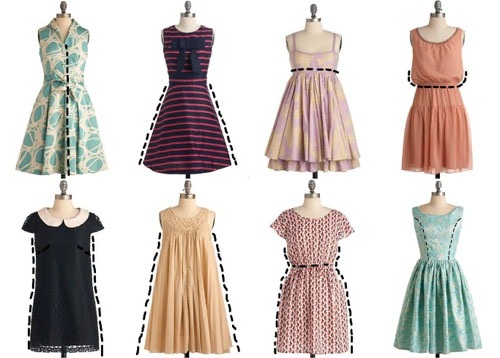
Below are the most popular variations for cutting and sewing.
Boho
This is a very loose and comfortable type of dress. On top it looks like a blouse, and at the bottom it turns into a wide skirt. Linen fabric is best for this variation. In order to make this type yourself, you need to cut out the material, paying careful attention to the correct execution of the folds on the dress.
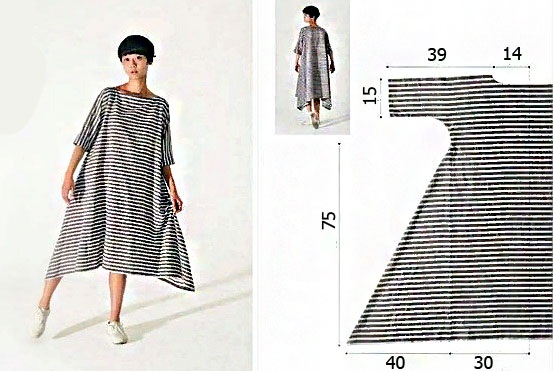
Then the front and back parts are joined together, the correct neckline is made. All the details are processed in the seam area, and the dress is turned inside out. The collar is sewn on the back side in the neck area. All the darts and sides are sewn, sleeves and additional parts (sleeves, ruffles and shelves) are made.
The edges of the product are processed, everything is carefully stitched.
Trapezoid
This simple but very stylish dress was first revealed to the world in the 60s of the last century. Since then, almost every season, fashionistas try to add at least one such piece to their collection. Sewing such a dress with your own hands is one of the easiest options.
Master classes and different interpretations of this model fill fashion websites daily. To sew, you need to take measurements of the chest, armholes and determine the overall length of the product. This version of the dress does not require darts at the waist, so there is no need to measure this parameter.
https://www.youtube.com/watch?v=fZM5f_6ELsQ
You need to carefully measure the dimensions of the neck, then slightly increase the values on the back. This is done for greater ease of putting on, but you do not need to be too zealous - later a zipper will be inserted in this place. On both sides along the side seam, you need to make a small expansion towards the bottom - no more than 7 cm.
All the resulting parts are sewn together, buttons, pockets, ruffles and zippers are put into place.
On the floor
This variation can decorate any woman both in everyday life and at a social event. There are a great many types of floor-length dresses, and each representative of the fair sex will be able to choose something of her own here. The main thing is to follow the general sewing algorithm for any other dress, but you need to pay attention to the length.
It is measured from the tailbone to the end point of the hem at the back. The upper part is worked out according to the chosen style. The most universal and simple option would be a T-shirt dress. You can leave small indentations on the hem to give the hem a more trapezoidal shape.
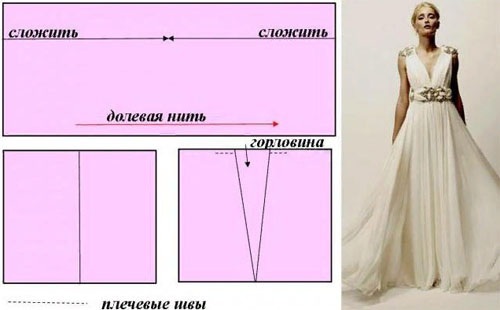
The more they are, the more pleated the skirt will be in the future. The bottom is made of two rectangles of equal size. All the details need to be carefully swept, tried on, checked to see if the length is right, and then firmly stitched.
The seams can be finished with decorative threads.
Straight dress
This is truly the easiest type to make. Although it is considered elementary from a design point of view, it is not inferior in elegance even to the most "tricky" version of the dress. To make a pattern, you need to measure the chest and hips, and also determine the length of the future product.
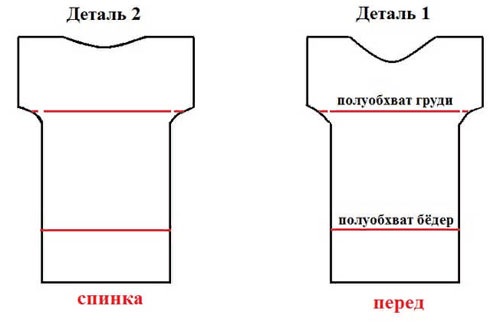
When all this is ready, you need to make a pattern in the form of two (or four) rectangles, having previously drawn the armholes for the neck and arms, leaving a slit for the zipper or buttons. The dimensions for them are taken in the same way as for any other option. The sleeves are made, respectively, as on other models.
All the parts are swept together and then, after checking, stitched together into one object.
Evening dress in half an hour
It often happens that you urgently need to come up with a dress for going out. It would be best to choose a simple option, which will take a little time to sew. The length, according to the dress code, should not be higher than the upper line of the knee.
https://www.youtube.com/watch?v=27ZpRAyME90
There is no need to make tight skirts and be overzealous with darts, since it is impossible to determine right away whether it will be comfortable to move around in a tight skirt of your own cut for a long time. You can take one large piece of material, sew it on the sides, having previously made a cut of your own length in the middle.
Then you need to process all the edges and pull the fabric into beautiful folds at the waist level.
How to sew a dress for plus size women yourself
All women want to be charming, and ladies with curvy shapes are no exception. Plump women would do best to choose a not too short option made of thick fabric. The style can be either loose or tight (the main thing is not to overdo it, otherwise the dress will be unattractive and uncomfortable to wear).
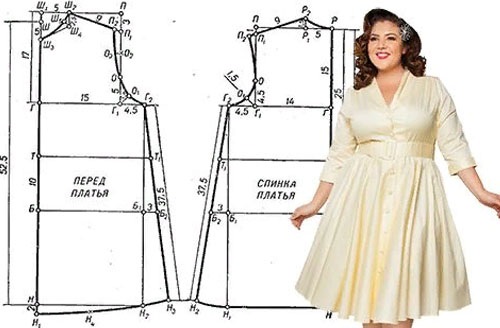
Beginners would be better off choosing an elongated style with a V-shaped neckline. The skirt should start slightly below the bust line and gather into folds a little. You can mark the darts intended for the waist. It is preferable to divide the entire model into 4 parts - two back and two front.
Accordingly, you need to sew the back parts first, then the front ones. Afterwards, they are all assembled into a single structure.
Maternity dress
Pregnant ladies especially need to feel beautiful and loved. A well-fitting dress will definitely help to make the right impression on others. However, it is not always possible to ensure a quality fit on such a figure.
Sewing a dress with your own hands (master class, different models for pregnant women can be found on the Internet) in this case will be the best solution.
To do this, it is necessary to take into account several important points:
- It is best to choose a stretchy, not too dense fabric.
- It is necessary to give the girl enough room to maneuver in this dress. Pressure on various parts of the body, especially the stomach, can have a negative effect on health.
The ideal option would be to choose a skirt that starts just below the bust line and does not hinder the owner's free movements. You can choose a light flowing fabric that will give the model more femininity.
Summer dress
On hot sultry days, it is not always possible to shine in all your glory. However, if you take into account several important aspects for sewing a summer dress, you can safely go and surprise everyone around you with your beauty in a new outfit.
For the summer season:
- The fabric is chosen to be light and bright. Linen is best.
- Avoid choosing too tight styles and synthetic materials – this will cause your body to sweat too much.
- You can experiment with lace by adding a few playful inserts into the design of the dress.
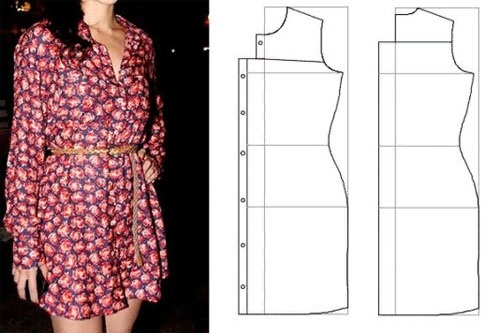
You can opt for such common models as boho, trapezoid or rectangle. Shirt dresses that fasten with buttons have also become popular recently. Their cut is easy to execute and very comfortable to wear.
Baby dress for a girl
Girls begin to show their desire for beauty very early. This is expressed, first of all, in clothes. In order to make a dress for a real fashionable young lady, very little will be needed. Most often, young ladies choose sarafans - they do not restrict the movements of the young lady, always look cute and are appropriate for any occasion.
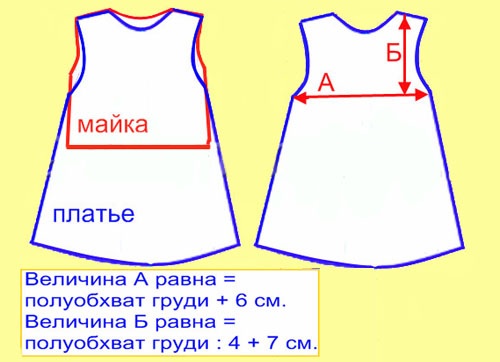
This item is cut like a trapezoid dress. You can play with the pattern and texture of the dress - this will definitely please the little lover of beauty.
How to quickly sew a home dress without a pattern
Sometimes it happens that you need to update your wardrobe urgently, but you have neither the time nor the desire to create patterns. In this case, it is possible to make a dress without a preliminary preparatory stage in the form of a pattern. To make it, you will need a piece of fabric that corresponds in length to the future dress and in width is about three hip girths.
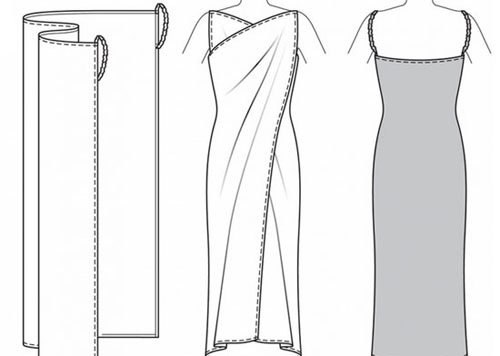
It should be wrapped around you like a pareo, secured with ties on the neck and shoulders. You can diversify the resulting image with a bright belt.
Sewing a dress with your own hands is an easy and very exciting process, which gives the seamstress a beautiful product that fits perfectly on the figure, pleases the eye with a well-chosen texture, type and color.
Various models, styles and techniques are presented by many master classes and short lessons in free access. Every fashionista will be able to find something of her own, individual. You just need to stock up on desire, enthusiasm and all the necessary materials.
Article formatting: E. Chaikina
Useful video about sewing a dress with your own hands
The story tells how to quickly sew a sarafan for a girl:

Yeah, right... sew two rectangles together and call THAT a dress? Don't make me laugh.
The pattern for the floor-length dress is completely unclear.